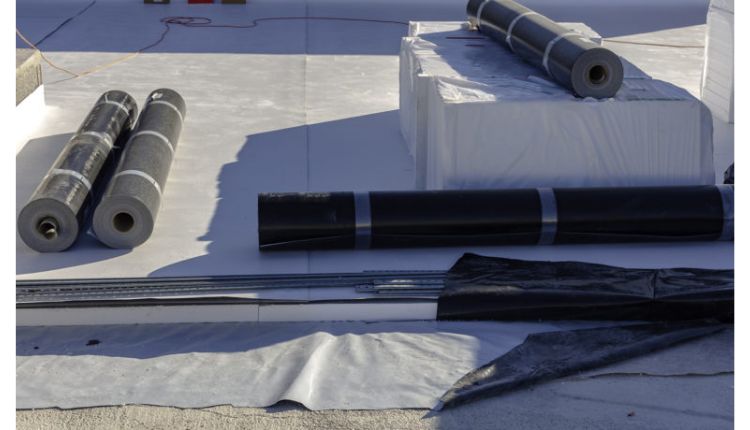
The Basics of Commercial Roofing
Whatever industry your business is in, having a reliable and durable roof is essential for its success. An improperly installed or low-quality roof can cause significant damage to the property and affect the business’s reputation. Thus, as a business owner, you should be familiar with commercial roofing, its types, its systems, and even other essential aspects that may affect the commercial roof in general. Although commercial roofing is best handled by roofing experts, it is still best that you are knowledgeable about its basics so you know how to handle them and how to converse more effectively with a roofing contractor.
What is commercial roofing?
A commercial roofing system, also known as institutional or corporate roofing, covers the design, installation, maintenance, repair, and replacement of commercial structures such as offices, retail spaces like shopping malls, schools, hospitals, hotels, and other hospitality establishments. Since it is typically used in large buildings, it is designed to withstand large amounts of water and other extreme weather conditions and to protect the building from other potential dangers.
Types of commercial roofs
Before discussing the different commercial roofing systems, let us first discuss the three most common categories used for commercial roofs. They are the following:
- Flat Roofs. The term “flat roof” is a bit of a misnomer as almost no roofing system is completely flat. Instead, the majority of the so-called “flat roofs” actually have a very modest slope, often less than half an inch per 12 inches. They are a popular choice for many commercial buildings because they provide more usable space, are less expensive to install, and are simpler to access and maintain.
- Low-Sloped Roofs. A low-slope roof is one that has a slope of at least three inches per foot or less. Just like flat roofs, this type of roof is commonly installed for commercial buildings mainly because it is affordable and easy to install or maintain. They also provide an excellent and efficient drainage system for the building.
- Pitched Roofs. This commercial roof has a slope of more than three inches per foot. They are not very typical for commercial buildings because they cost more and are impractical for larger commercial buildings. And exactly because of their steeper slope, they are difficult to install and maintain. However, their shape also makes them more efficient in draining water and less susceptible to debris buildup.
Types of commercial roofing systems
- Built-Up Roofing (BUR). Also referred to as a “tar and gravel” roof, this commercial roof system is made up of several layers of asphalt (bitumen), roofing felt, and gravel. It works best for commercial buildings with low-slope or flat roofs.
- Modified Bitumen. This commercial roof system is an asphalt membrane mixed with rubber or plastic polymers, reinforced with fiberglass, and installed on two layers. It works best on commercial buildings that have flat or low-slope roofs.
- Single-Ply Roofing. This has two categories, either EPDM or TPO/PVC. EPDM is made from synthetic rubber while TPO and PVC membranes are made from plastic polymers. They are installed by ballasting, adhesives, or mechanical attachment, and are ideal for buildings with flat and low-slope roofs.
- Metal. This commercial roofing system is made from a variety of metals, including tin, aluminum, copper, zinc, corrugated or galvanized steel, and lead. It works with any type of commercial roof, either flat, low-slope, or steep-slope.
Essential Aspects of Commercial Roofing
- Commercial Roof Installation. How to install a commercial roof depends on several factors such as the materials used, the labor needed, and the level of difficulty. This is why hiring a reliable commercial roofing contractor is crucial to ensure that the roof will be installed properly and up to the standards required.
- Roof Inspection. This involves examining the condition of the roof, including the roof membranes, vents, gutters, and drainage pipes. Doing so can help prevent potential roof damage and identify any roof issues early before they worsen and cause significant damage to the building in general.
- Maintenance. In addition to inspection, proper maintenance is crucial to extend the life of a commercial roof. It includes cleaning the debris, unclogging gutters and drainage pipes, patching punctures and holes, treating water damage, and preparing the roof for every season. This is to ensure that the roof is always in excellent condition.
Pro Tech Roofing is an Expert in Commercial Roofing!
No matter what type of commercial roof you’ll install, what roofing system you’ll choose, or what aspect of commercial roofing you’ll work on, you need to contact and hire a reliable roofing contractor only as they have the specialized skills and training necessary to handle and finish any commercial roofing job.
Pro Tech Roofing can help you in Columbus. They are experts in commercial roofing so they can assist you with any of your commercial roofing needs. May it be TPO, EPDM, PVC, or metal roofing for flat and low-slope commercial roofs, they can give you quality results every time.
Links:



